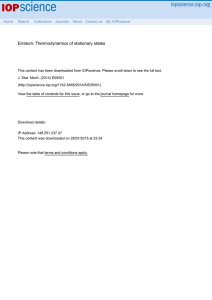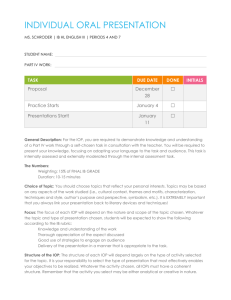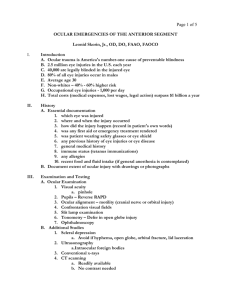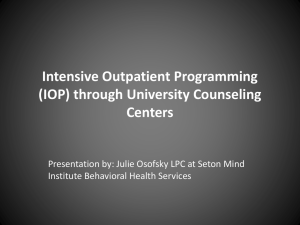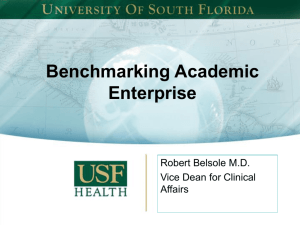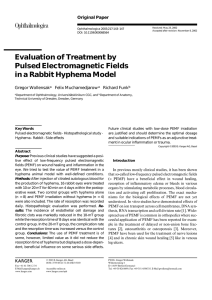Billing and Coding lecture: aka The Most Interesting Topic Ever!
advertisement
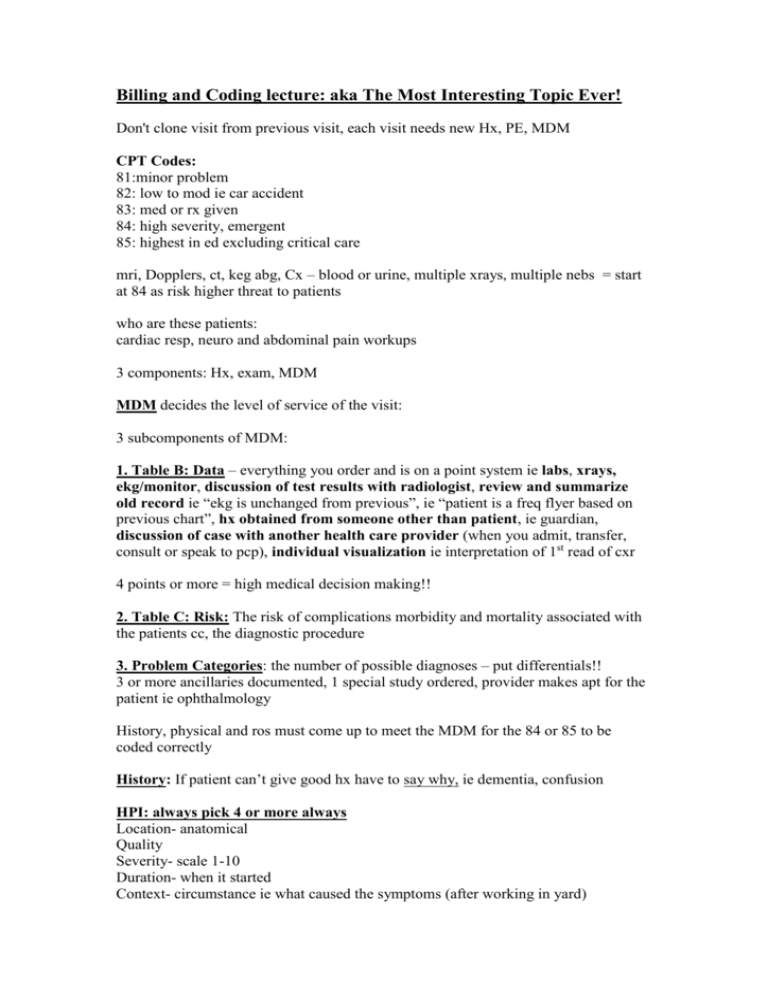
Billing and Coding lecture: aka The Most Interesting Topic Ever! Don't clone visit from previous visit, each visit needs new Hx, PE, MDM CPT Codes: 81:minor problem 82: low to mod ie car accident 83: med or rx given 84: high severity, emergent 85: highest in ed excluding critical care mri, Dopplers, ct, keg abg, Cx – blood or urine, multiple xrays, multiple nebs = start at 84 as risk higher threat to patients who are these patients: cardiac resp, neuro and abdominal pain workups 3 components: Hx, exam, MDM MDM decides the level of service of the visit: 3 subcomponents of MDM: 1. Table B: Data – everything you order and is on a point system ie labs, xrays, ekg/monitor, discussion of test results with radiologist, review and summarize old record ie “ekg is unchanged from previous”, ie “patient is a freq flyer based on previous chart”, hx obtained from someone other than patient, ie guardian, discussion of case with another health care provider (when you admit, transfer, consult or speak to pcp), individual visualization ie interpretation of 1st read of cxr 4 points or more = high medical decision making!! 2. Table C: Risk: The risk of complications morbidity and mortality associated with the patients cc, the diagnostic procedure 3. Problem Categories: the number of possible diagnoses – put differentials!! 3 or more ancillaries documented, 1 special study ordered, provider makes apt for the patient ie ophthalmology History, physical and ros must come up to meet the MDM for the 84 or 85 to be coded correctly History: If patient can’t give good hx have to say why, ie dementia, confusion HPI: always pick 4 or more always Location- anatomical Quality Severity- scale 1-10 Duration- when it started Context- circumstance ie what caused the symptoms (after working in yard) HPI for depression and etoh is difficult Tips: ROS: 10 or more: (the number 1 area where we don't document enough) For 85 level of service: can use “ all other systems neg except as above in HPI” – you can only do this fore 85 level patients, be careful doing this on all charts as its considered cloning! Past, Family, Social: Need 2 out of 3, if family and social not pertinent then state that Exam: For level 5 need findings from >= 8 organ systems ie if neck: supple = msk, no adenopathy = lymph nodes ie there’s 2 organ systems just for neck Exam caveat: need to document areas that cant examine and why, ie: psych patient, patient refuses due to religious beliefs Procedures : if resident does it, the attending must review this Xrays/ekg: same, attending has to agree The attending has to have contact with the patient. “ I examined the patient and agree with assessment” – this is ok for now but eventually they are gonna want more Critical Care: need documentation over 30 min (Really for the attending) Beside patient care Reviewing ancillary Discussions with family, physicians Chart completion Clinical conditions consistent with critical care: Airway compromise, acute mi or cva with lytics, cardiac dysrhythmia, sepsis aortic dissection, perforated viscous, coma, resp failure, gi bleed, dka, anaphalaxis Not found in critical care: Triple lumens Intubation Pacemakers Pericardiocentesis Thrombolytics Procedures: Document separate exam ie laceration: length in cm location type of closure and material nv exam ie: fracture care bill for attempts to reduce Primary Diagnosis: 1st one listed ie if car accident and have back pain , dx should be Back Injury FINALLY ITS OVER~!!! Kevin’s Lecture: Ocular Trauma Eye Exam: Visual acuity and light reflex Palpate Open globe injuries: 2 types: globe rupture, globe laceration Risk Factors: Younger, male Initial assessment: trauma so CAB 1st! Exam: Decreased visual acuity Tear drop pupil- eye extruding out of iris Extrusion vitreous Uvea prolapse (iris/pupil comes out under cornea) APD Seidel’s Sign- leaking of flurocein, but don't do this is suspect globe rupture Red Flags: Hyphema 360 degree conjunctival hemorrhage – covers up the signs of globe rupture DON’TS: Don't manipulate eye Don't remove fb MUST DO: Visual acuity APD Ocular Trauma Score – just look it up Regression Trree Score – visual acuity and apd correlate most with visual outcome Imaging: Ct is image choice – 50-100% sensitive for globe rupture Xray- only shows 50% orbital # ED TXT: Eye shield Anti-emetics- avoid vomiting as increases IOP Pain control Tetanus Ophthalmology Making an eye shield: Styrofoam cup and tape over eye Definative txt: Surgical closure w/I 24 hrs Antibiotics: Vancomycine/ceftazidime for endopthalmitis ( give it prophalactically to prevent this) Intubation: Ketamine and Succ increase IOP/ICP? - the data sucks – 1957 study says don't give succinylcholine from one case study Then kevin shows a pic of jess cook!! What about Ketamine?? 2 studies show no elevation of iop Retrobulbar hematoma: Bleed in back of eye IOP orbital ischemia This is compartment syndrome of the eye! Indications: Proptosis Iop >40 Restriction eye movement Acute visual loss Treatment: Lateral Cathotomy Equipment: Lido with epi, needle and syringe, saline, suture kit Cut inferior crus, but if that doesn't work cut superior too 1. inject lido with epi 1 cc in corner of eye 2. crimp with hemostat- helps bleeding 3. lateral incision 4. dissect down 5. cut lateral cathus Vision should come back in 5 min Resolution of APD Vision improved blood should start coming out if you have released the hematoma Optic Nerve Sheath hematoma- needs definitive OR management Hyphema Blood in anterior chamber - blocks blood flow increase iop - graded 1-4 Initial Management Eye shield Elevate head of bed Cycloplegics Steroids Beta blockers /Actz Analgesia Antifibrinolytics – aim is to prevent re-bleeding TXA, AMA Cochrane reviews: These only found to decrease risk of re-bleeding Re-bleeding: Occurs day 3-5 Admit them if its bigger Corneal Blood Staining Rbc’s deposit hemosiderin in cornea, takes months to resolve Glaucoma Criteria for Admission for hyphema: >3 or 4 grade IOP >22 Coagulopathy and blood thinners SCC Children/compliance If discharging, need 24 hr optho fu and IOP measured daily Take home: Trauma patient 1st Eye shield HOB 30 degrees Zofran Abx, tetanus Know criteria for hyphema admission Rabrich CQI: Patient was triaged as intox, never intox. FS never done as patient was a& o x 3 eventually and dc and went to waiting room Upon ems arrival to bring back to shelter patient couldn't walk Found to be tachy, rhonchi and with acute sepsis with multilobar pna Dan Solis CQI Bulletin: RVU’s Interns 0.6, 2nd year 1.2, 3rd year 1.6 patients per hour RVU’s: community docs will need to know about this Level 1 patient: $21 Level 5: $173 For every ekg interpret = 0.2 RVU = $7 1 RVU is $35 If get 10 RVU’S per hour = increase salary by 10%


